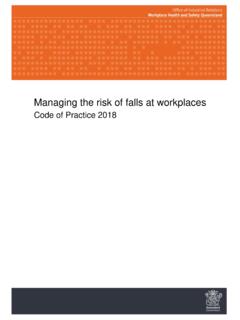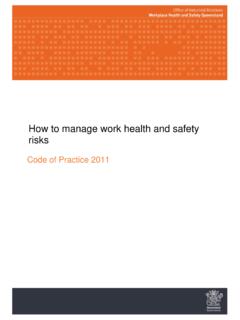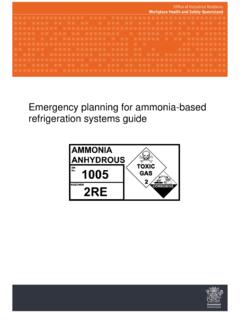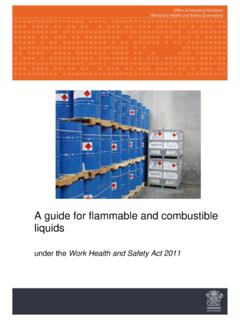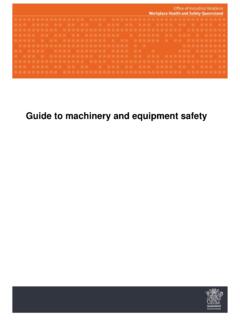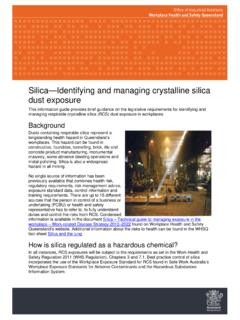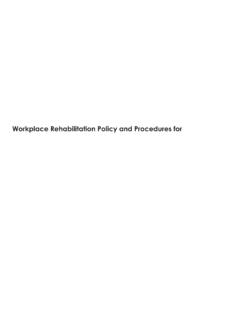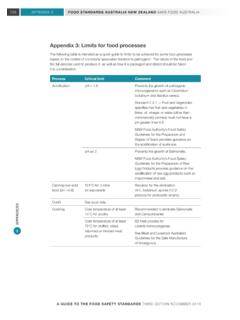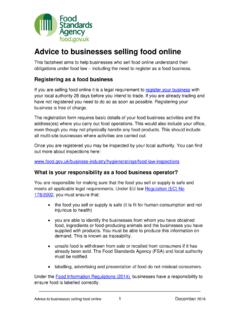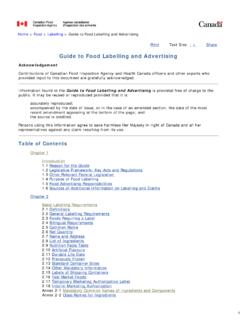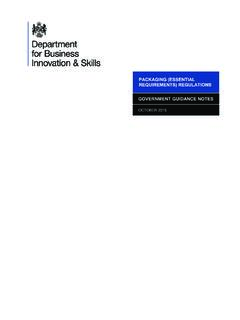Transcription of Labelling of workplace hazardous chemicals Code of ...
1 Labelling of workplace hazardous chemicals Code of Practice 2021 Labelling of workplace hazardous chemicals Code of Practice 2021 Page 2 of 121 PN12649 ISBN Creative Commons This copyright work is licensed under a Creative Commons Attribution-Noncommercial International licence. To view a copy of this licence, visit In essence, you are f ree to copy, communicate and adapt the work f or non-commercial purposes, as long as you attribute the work to Saf e Work Australia and abide by the other licence terms. Labelling of workplace hazardous chemicals Code of Practice 2021 Page 3 of 121 Contents Foreword .. 5 1.
2 Introduction .. 6 When is a label under the WHS Regulation not required? .. 6 Who has duties in relation to Labelling hazardous chemicals ? .. 8 2. Labelling hazardous chemicals general information .. 10 What information must be included on a label? .. 10 Product identifier .. 10 Disclosure of ingredients .. 11 Manufacturer/importer information .. 12 Label elements .. 13 Expiry date .. 14 Pipe work .. 15 3. Special Labelling 16 Small containers .. 16 Research chemicals or samples for analysis .. 17 Decanted or transferred hazardous chemicals .. 18 chemicals with known hazards that are not supplied to another 19 hazardous waste products.
3 19 Duplication of Labelling elements .. 20 hazardous chemicals classified in the explosives hazard class .. 21 hazardous chemicals that are dangerous goods packaged for transport .. 21 Consumer products .. 22 Agricultural or veterinary chemical products .. 23 Products containing nanomaterials .. 23 Labelling of products which pose a hazard but do not meet hazardous chemical definition 24 4. Labelling design and layout .. 25 Grouping information .. 25 Orientation and size of label elements .. 25 Placement .. 25 5. Other Labelling duties .. 26 Containers found without correct Labelling .. 26 Reviewing and updating information on labels.
4 26 Appendix A Glossary .. 27 Appendix B Checklist for preparing a label .. 33 Appendix C guide for selecting generic 35 Establishing the generic name .. 35 Labelling of workplace hazardous chemicals Code of Practice 2021 Page 4 of 121 Appendix D Application of label elements .. 46 D1. Structure of hazard statement 46 D2. Structure of precautionary statement 46 D3. Tables of label elements from the 47 D4. Additional non-GHS hazard statements .. 96 Appendix E Precedence rules for label elements .. 99 Multiple hazards and precedence of hazard information .. 99 Appendix F Hazard pictograms .. 104 Appendix G Comparison of hazard pictograms with ADG class 106 Appendix H Example labels.
5 109 Appendix I Other relevant information .. 121 Labelling of workplace hazardous chemicals Code of Practice 2021 Page 5 of 121 Foreword This code of practice on Labelling of workplace hazardous chemicals is an approved code of practice under section 274 of the Work Health and Safety Act 2011 (WHS Act). An approved code of practice is a practical guide to achieving the standards of health, safety and welfare required under the WHS Act and the Work Health and Safety Regulation 2011 (WHS Regulation). Under section 26A of the WHS Act duty holders must comply with an approved code of practice or follow another method, such as a technical or industry standard, if it provides an equivalent or higher standard of work health and safety than the standard required in this code.
6 A code of practice applies to anyone who has a duty of care in the circumstances described in the code. In most cases, following an approved code of practice would achieve compliance with the health and safety duties in the WHS Act, in relation to the subject matter of the code. Like regulations, codes of practice deal with particular issues and do not cover all hazards or risks that may arise. The health and safety duties require duty holders to consider all risks associated with work, not only those for which regulations and codes of practice exist. Codes of practice are admissible in court proceedings under the WHS Act and WHS Regulation.
7 Courts may regard a code of practice as evidence of what is known about a hazard, risk or control and may rely on the code in determining what is reasonably practicable in the circumstances to which the code relates. An inspector may refer to an approved code of practice when issuing an improvement or prohibition notice. This may include issuing an improvement notice for failure to comply with a code of practice where equivalent or higher standards of work health and safety have not been demonstrated. Scope and application This Code is intended to be read by a person conducting a business or undertaking (PCBU). It provides practical guidance to PCBUs on how to label hazardous chemicals that are being manufactured or imported for use, handling or storage in Australia.
8 This code may be a useful reference for other persons interested in the duties under the WHS Act and WHS Regulation. This code applies to a person conducting a business or undertaking involved in the manufacture or import of hazardous chemicals that will be used, or could reasonably be expected to be used, in workplaces covered by the WHS Act. How to use this code of practice This code includes references to the legal requirements under the WHS Act and WHS Regulation. These are included for convenience only and should not be relied on in place of the full text of the WHS Act or WHS Regulation. The words must , requires or mandatory indicate a legal requirement exists that must be complied with.
9 The word should is used in this code to indicate a recommended course of action, while may is used to indicate an optional course of action. Labelling of workplace hazardous chemicals Code of Practice 2021 Page 6 of 121 1. Introduction This Code describes the type of information that is needed on labels for various hazardous chemicals so that users of these chemicals in workplaces can identify any hazards associated with the correct classification of the chemical and take appropriate steps to eliminate or minimise the risks. When is a label under the WHS Regulation not required? In general, a label is required for any substance, mixture or article classified as a hazardous chemical under the WHS Regulation.
10 However, there are several types of hazardous chemical that are excluded from the Labelling provisions under section335 of the WHS Regulation or exempted from coverage from all provisions in Part of the WHS Regulation. hazardous chemicals supplied to a workplace before 1 January 2017 Under section 341 of the WHS Regulation, chemicals do not need to be labelled in accordance with the WHS Regulation if they were manufactured or imported before 1 January 2017, labelled in accordance with the 1994 National Code of Practice at that time and retain that label. The National Code of Practice for the Labelling of workplace Substances 1994 [NOHSC: 2012 (1994)] was used to label workplace hazardous chemicals prior to 2017.
